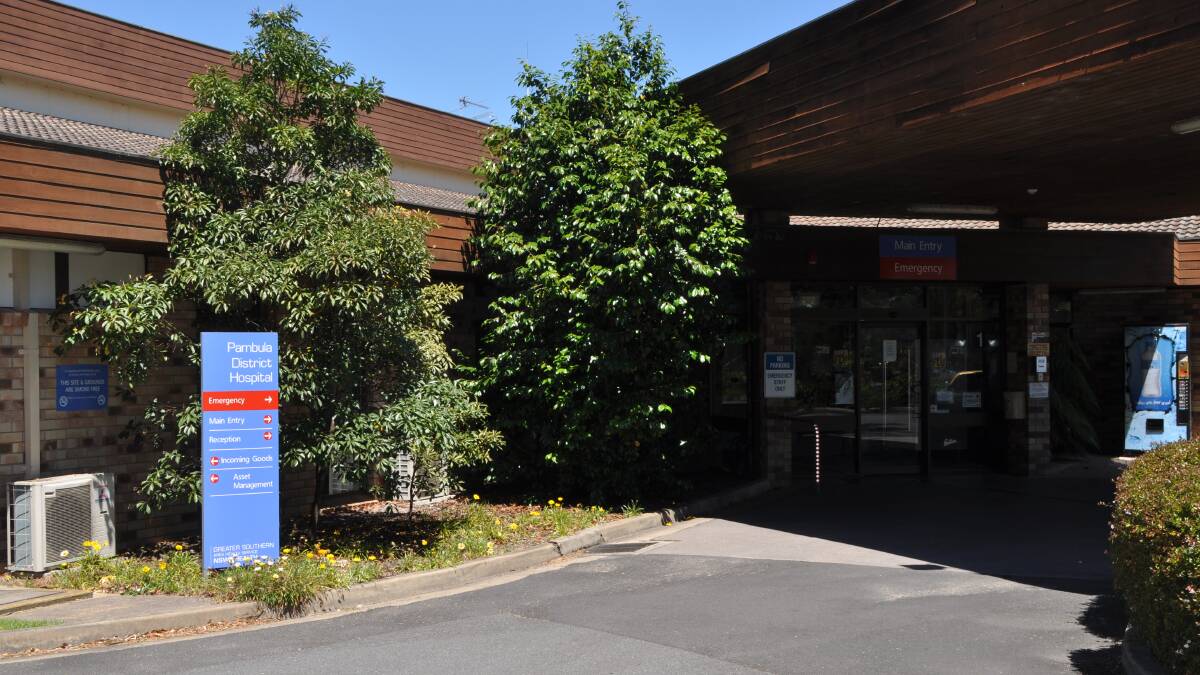
Southern NSW Local Health District (SNSWLHD) has announced the new model of care for Pambula Hospital which will include less beds and a nurse-led emergency department.
Subscribe now for unlimited access.
$0/
(min cost $0)
or signup to continue reading
The announcement follows much debate by the Pambula Health Service Community Engagement Committee (PHSCEC), which put forward 39 recommendations to the health district.
Chairman of the PHSCEC, Les Stahl said that the committee had looked to the future of the hospital and in maintaining medical services for the area.
There have been compromises made in the recommendations to ensure that Pambula Hospital, as an entity remains and in that respect, the committee has been successful.
Termed a “new model of care” in the health sector, the improved services focus on providing ambulatory care and supporting people to live independently and well at home, while also delivering a strong emphasis on rehabilitation and support for inpatients, the health district said.
The services offered at Pambula Hospital will be an integrated part of the wider health service network in the Bega Valley and take advantage of the state-of-the-art technologies available at the new South East Regional Hospital (SERH) at Bega, which opens next month.
The changes include the adoption by SNSWLHD of almost all 39 recommendations made by the PHSCEC.
The health district said that the new model of care was consistent with the NSW Rural Health Plan which advocated ‘hub and spoke’ type arrangements of health services.
Under the new Pambula model of care:
1.The number of inpatient beds will be typically maintained at 12 beds. It is proposed that the number of beds in these rooms will be reduced from four to two beds to provide more space and improve patient amenities.
The beds will be for patients recovering from surgery or illness, or suffering low-level non-acute conditions, and also caring for people requiring palliative and end of life care.
Pambula Hospital caters mainly for older patients, with more than half of people (57 per cent) admitted to the hospital aged over 65. Only 12 per cent of admitted patients are aged under 30.
2.An emergency health care service will continue with a specialised, nurse-led Assessment, Treatment and Care clinic for people with minor injuries and illnesses.
The walk-in Assessment and Treatment Clinic will operate from 8am to 8pm seven days a week and provides for acute assessment, stabilisation, management and referral of self-presenting non-urgent illnesses and minor injuries.
Ambulance presentations will be taken directly to the upgraded emergency facilities at the SERH.
The health district said that over past years, presentations to Pambula ED have declined significantly.
“In the two years 2013-15 presentations have fallen by 17.9 per cent,” the organisation said.
3.The range of ambulatory health care services at Pambula Hospital will continue including new outpatient services and improvements to Hospital-In-The-Home clinics.
4.Health technology at the hospital including Telehealth will be boosted.
5.Community health services will continue from the Community Health Centre at Pambula.
6.Community mental health, drug and alcohol patient services will also continue to be provided at Pambula.
7.Consulting rooms for visiting specialists will be developed. This will offer specialists the opportunity to conduct clinics at Pambula.
8.Improved space for hospital volunteers and other users of the hospital (e.g. family room/quiet room)
The Acting Chief Executive of SNSWLHD, Ann Stewart said the new model of care would be further supported by a staged refurbishment of Pambula Hospital.
“SNSWLHD will start progressive improvements this year which are likely to include upgrading inpatient and consulting room areas and in the future, provision of space for selfdialysis,” Ann Stewart said.
“Installation of WIFI throughout the hospital will be part of the refurbishment as well as preparatory work for the introduction of an Electronic Medical Record system to facilitate better access to patient records at the hospital.
“Today’s announcement demonstrates that local communities and SNSWLHD can work co-operatively to find solutions to deliver improved health services in often difficult and challenging environments.
“The PHSCEC is to be congratulated for its thorough and wide-ranging consultations and engagement with the local community, which has played such a clear and influential role in helping shape these proposals and the future of services being provided,” Ms Stewart said.

